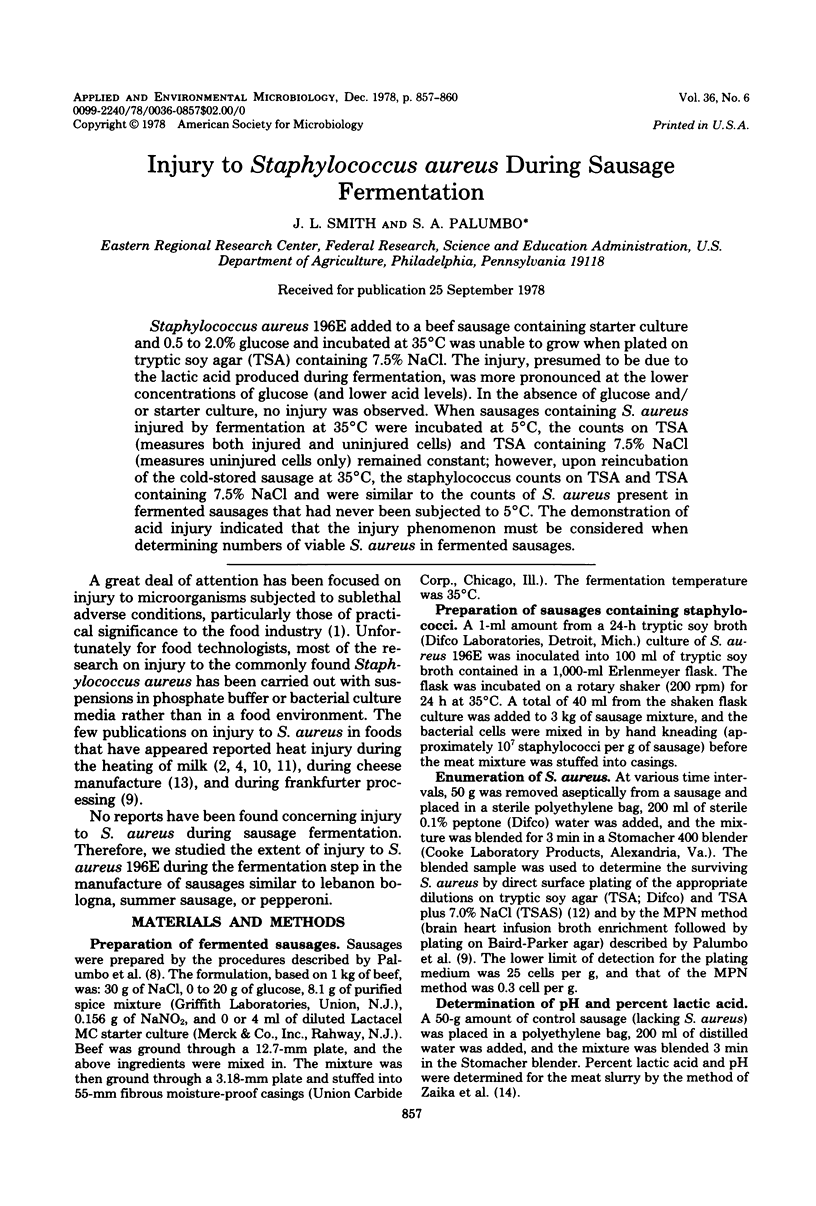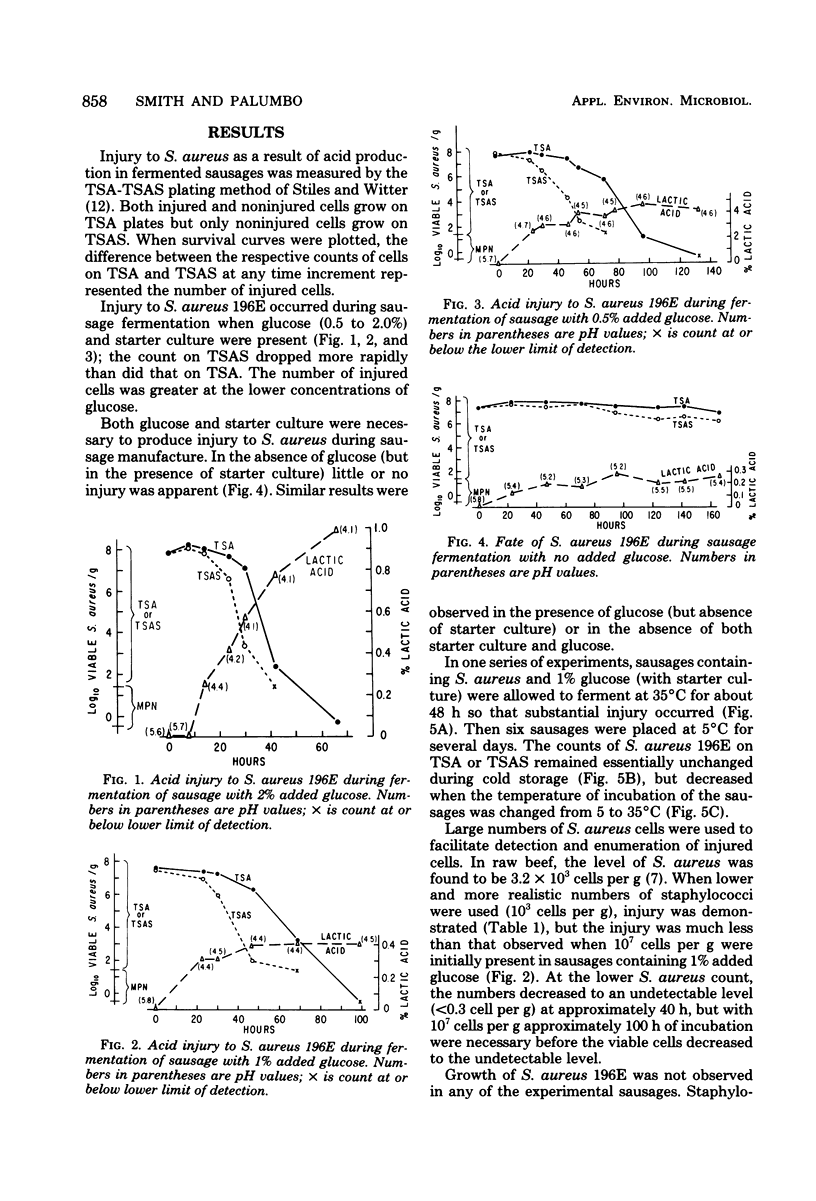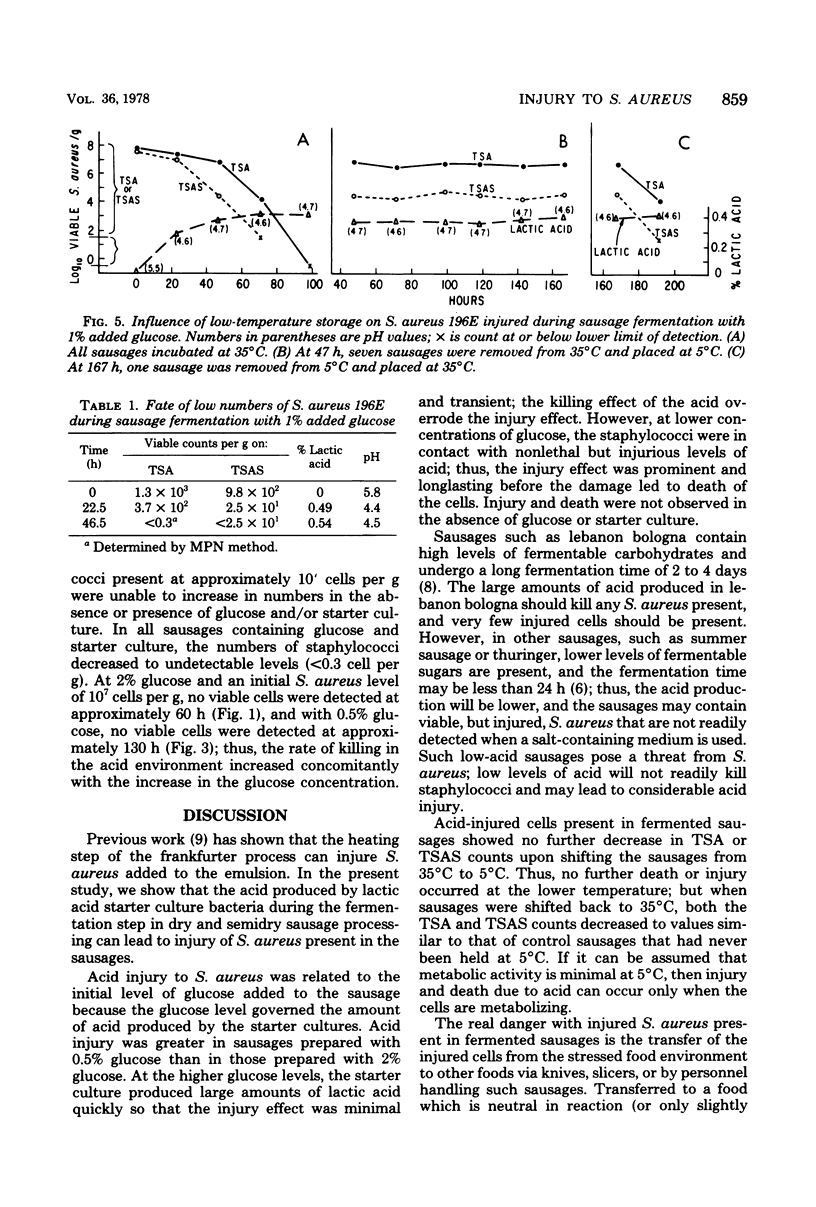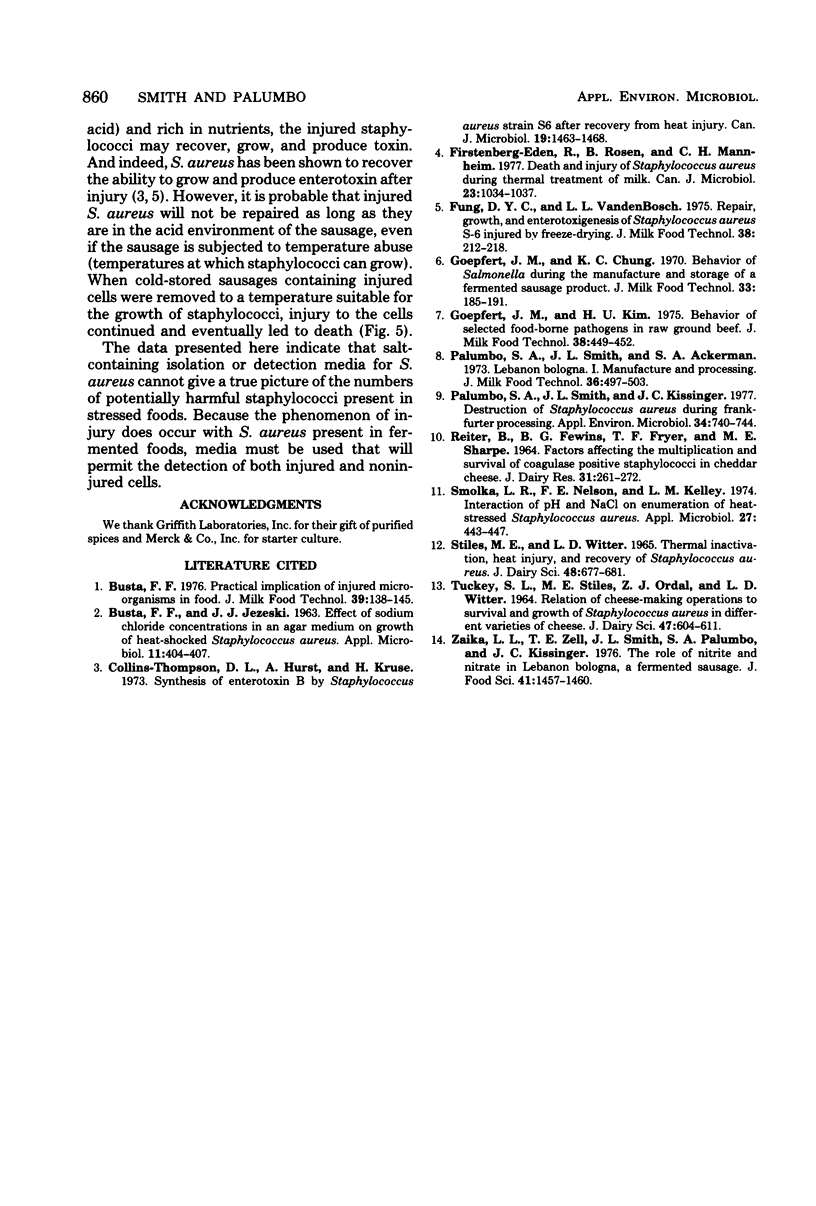Abstract
Staphylococcus aureus 196E added to a beef sausage containing starter culture and 0.5 to 2.0% glucose and incubated at 35 degrees C was unable to grow when plated on tryptic soy agar (TSA) containing 7.5% NaCl. The injury, presumed to be due to the lactic acid produced during fermentation, was more pronounced at the lower concentrations of glucose (and lower acid levels). In the absence of glucose and/or starter culture, no injury was observed. When sausages containing S. aureus injured by fermentation at 35 degrees C were incubated at 5 degrees C, the counts on TSA (measures both injured and uninjured cells) and TSA containing 7.5% NaCl (measures uninjured cells only) remained constant; however, upon reincubation of the cold-stored sausage at 35 degrees C, the staphylococcus counts on TSA and TSA containing 7.5% NaCl and were similar to the counts of S. aureus present in fermenting sausages that had never been subjected to 5 degrees C. The demonstration of acid injury indicated that the injury phenomenon must be considered when determining numbers of viable S. aureus in fermented sausages.
Full text
PDF



Selected References
These references are in PubMed. This may not be the complete list of references from this article.
- BUSTA F. F., JEZESKI J. J. EFFECT OF SODIUM CHLORIDE CONCENTRATION IN AN AGAR MEDIUM ON GROWTH OF HEAT-SHOCKED STAPHYLOCOCCUS AUREUS. Appl Microbiol. 1963 Sep;11:404–407. doi: 10.1128/am.11.5.404-407.1963. [DOI] [PMC free article] [PubMed] [Google Scholar]
- Collins-Thompson D. L., Hurst A., Kruse H. Synthesis of enterotoxin B by Staphylococcus aureus strain S6 after recovery from heat injury. Can J Microbiol. 1973 Dec;19(12):1463–1468. doi: 10.1139/m73-238. [DOI] [PubMed] [Google Scholar]
- Firstenberg-Eden R., Rosen B., Mannheim C. H. Death and injury of Staphytococcus aureus during thermal treatment of milk. Can J Microbiol. 1977 Aug;23(8):1034–1037. doi: 10.1139/m77-153. [DOI] [PubMed] [Google Scholar]
- Palumbo S. A., Smith J. L., Kissinger J. C. Destruction of Staphylococcus aureus during frankfurter processing. Appl Environ Microbiol. 1977 Dec;34(6):740–744. doi: 10.1128/aem.34.6.740-744.1977. [DOI] [PMC free article] [PubMed] [Google Scholar]
- STILES M. E., WITTER L. D. THERMAL INACTIVATION, HEAT INJURY, AND RECOVERY OF STAPHYLOCOCCUS AUREUS. J Dairy Sci. 1965 Jun;48:677–681. doi: 10.3168/jds.s0022-0302(65)88321-7. [DOI] [PubMed] [Google Scholar]
- Smolka L. R., Nelson F. E., Kelley L. M. Interaction of pH and NaCl on enumeration of heat-stressed Staphylococcus aureus. Appl Microbiol. 1974 Mar;27(3):443–447. doi: 10.1128/am.27.3.443-447.1974. [DOI] [PMC free article] [PubMed] [Google Scholar]


